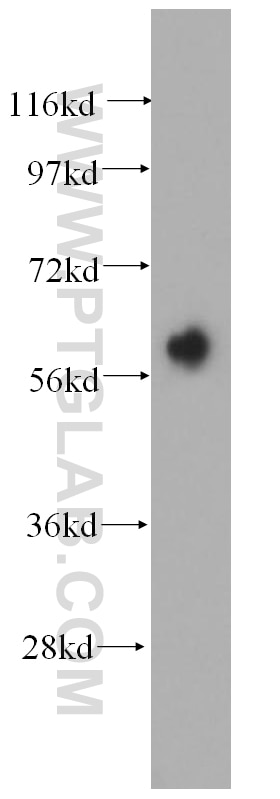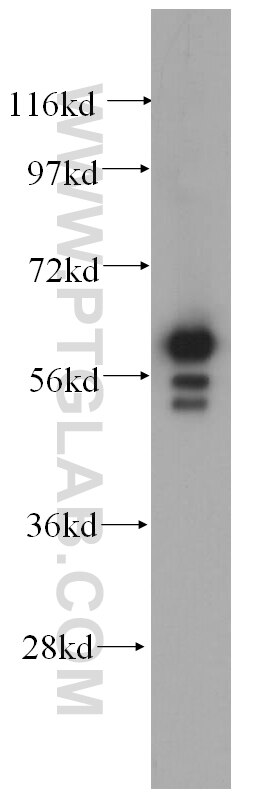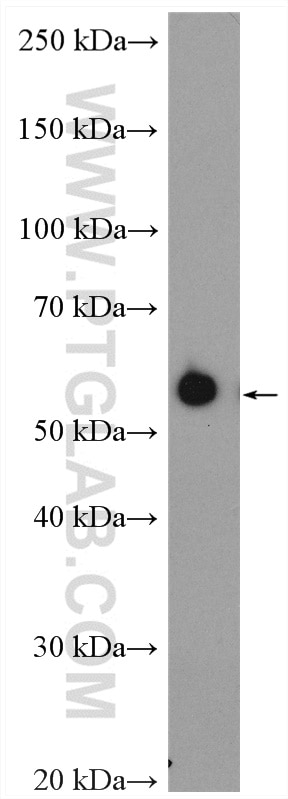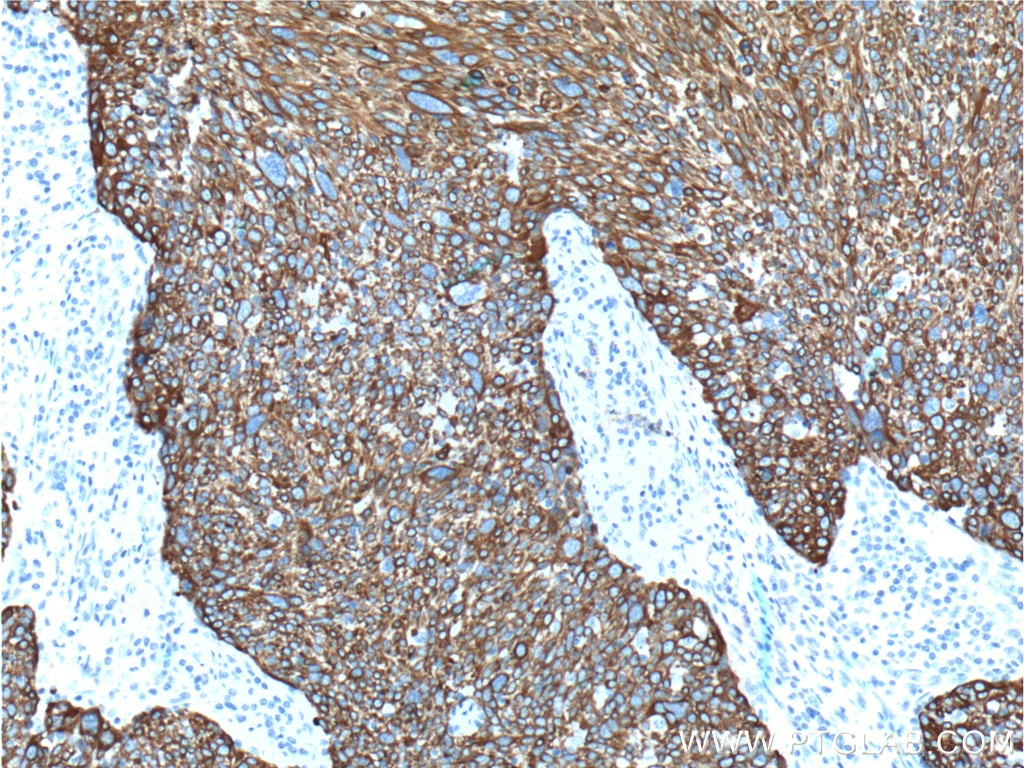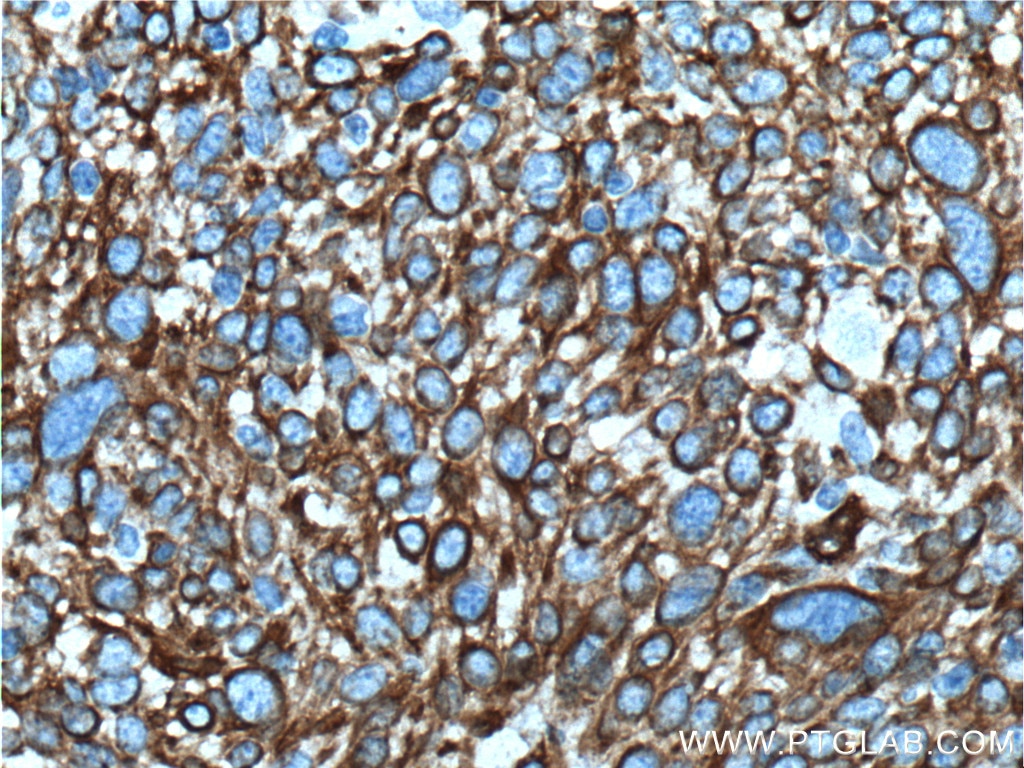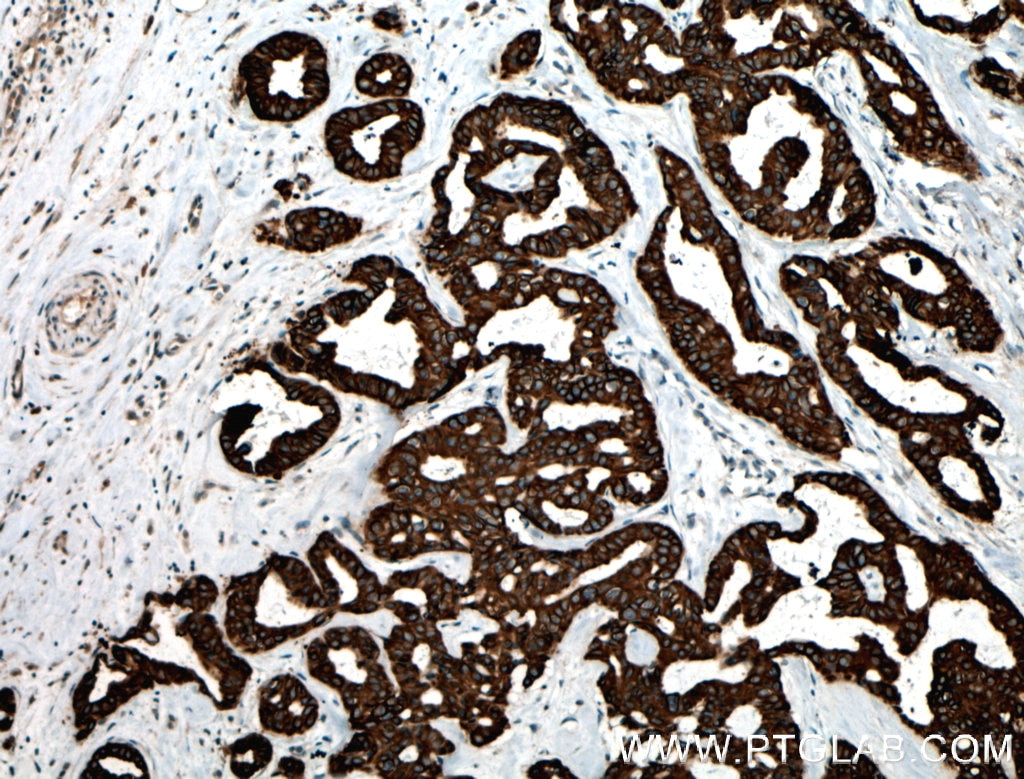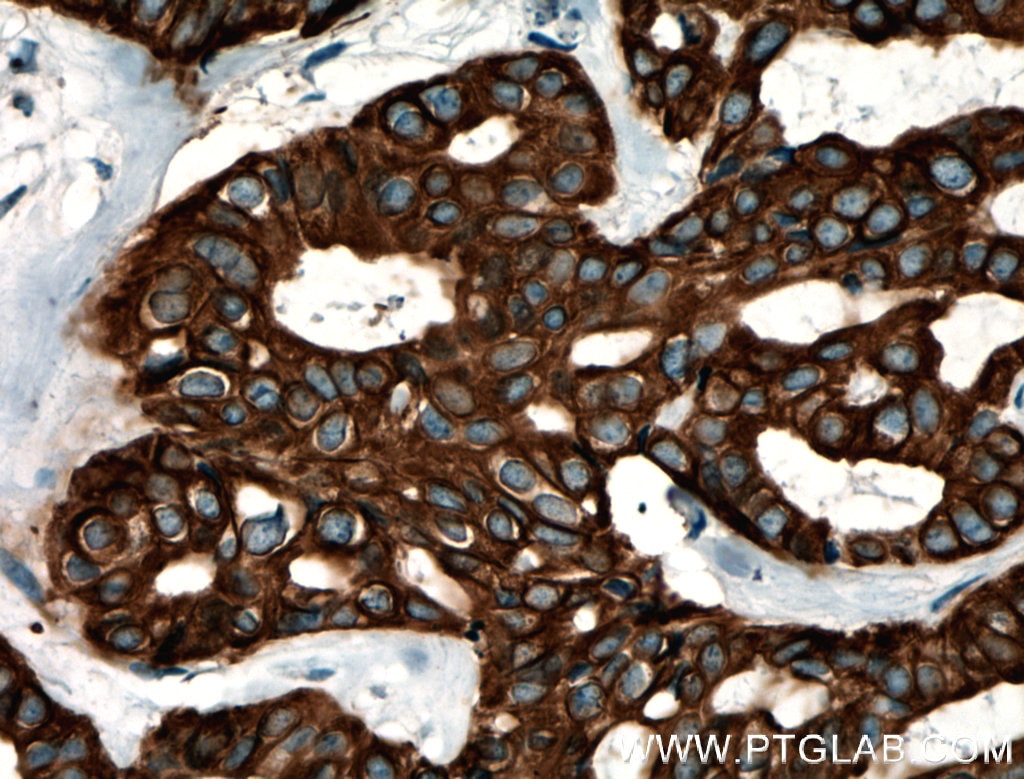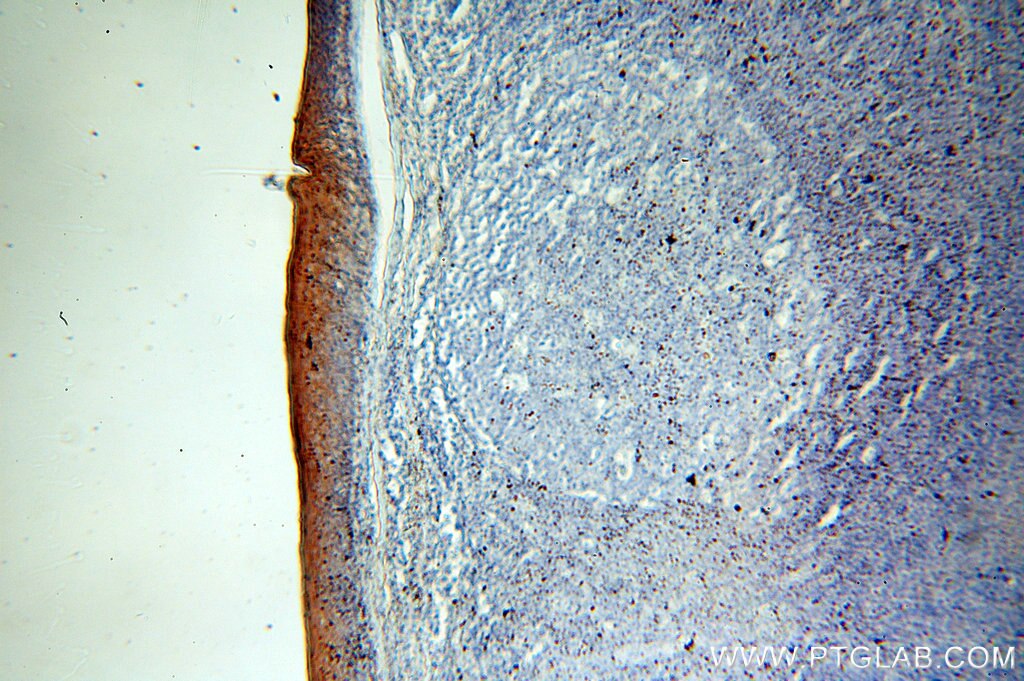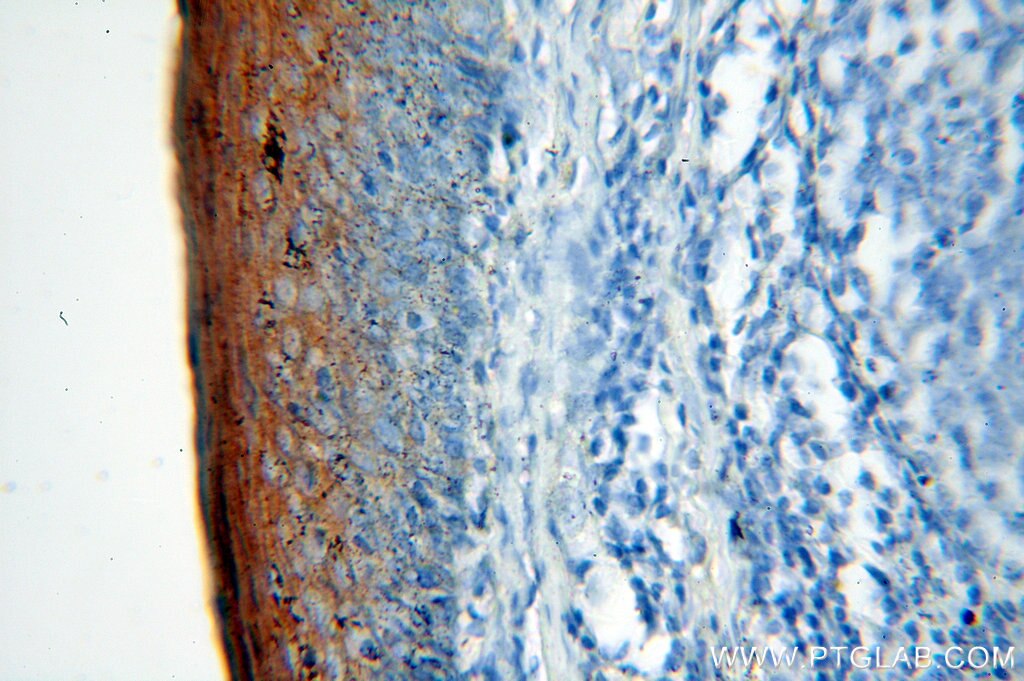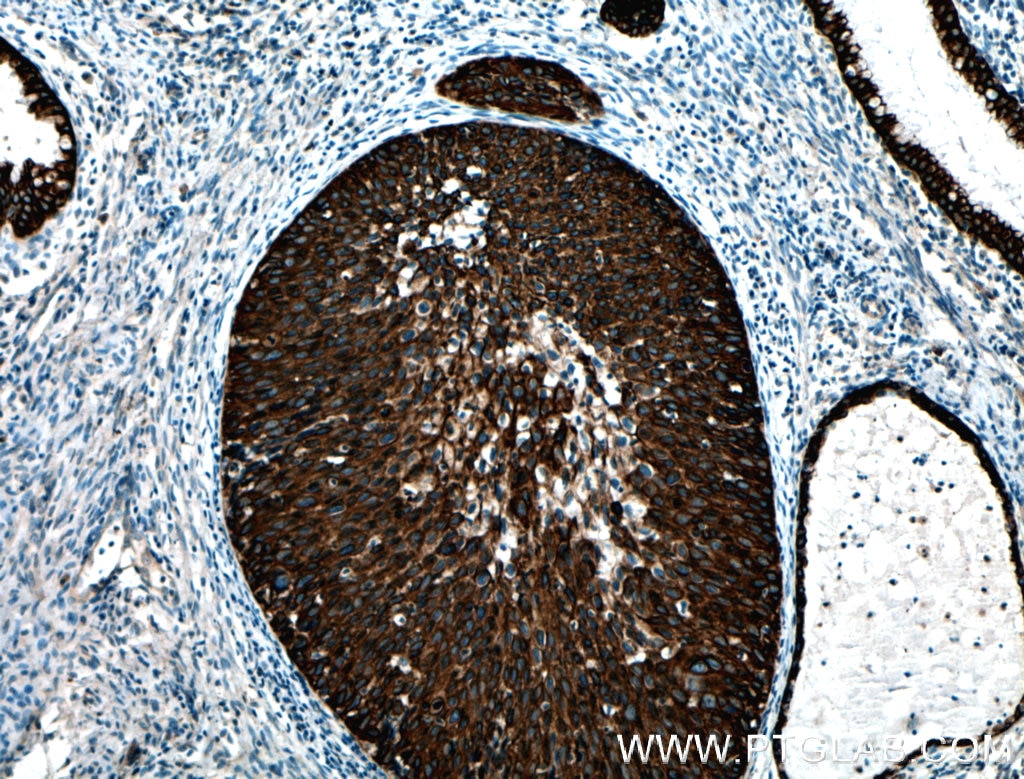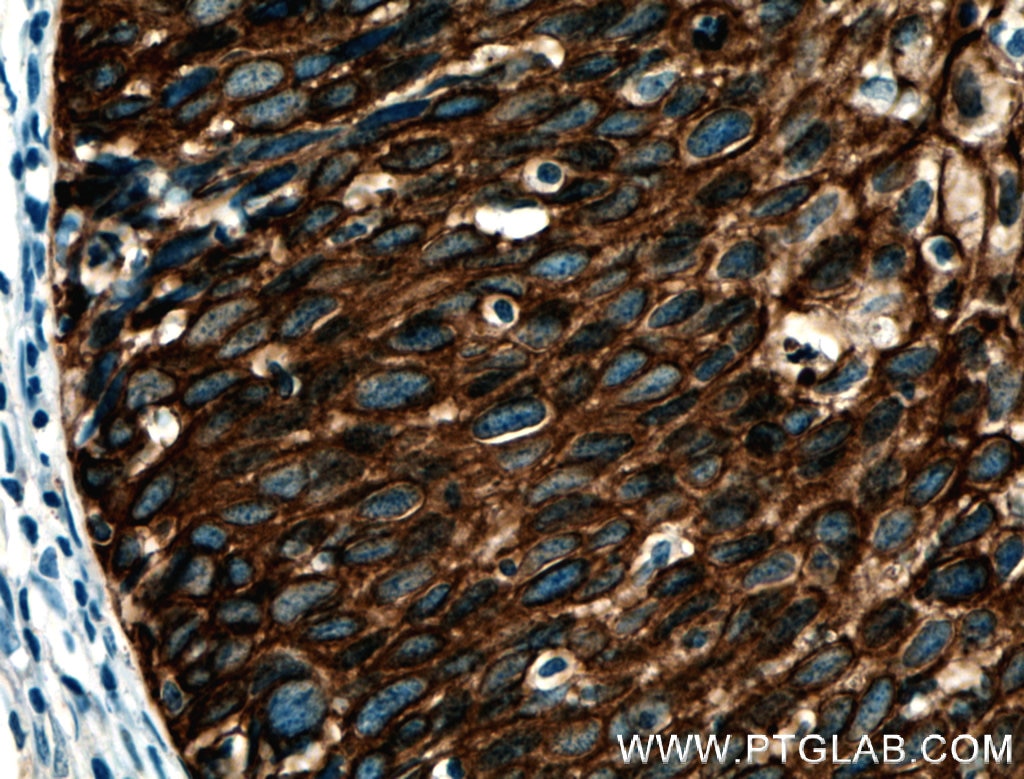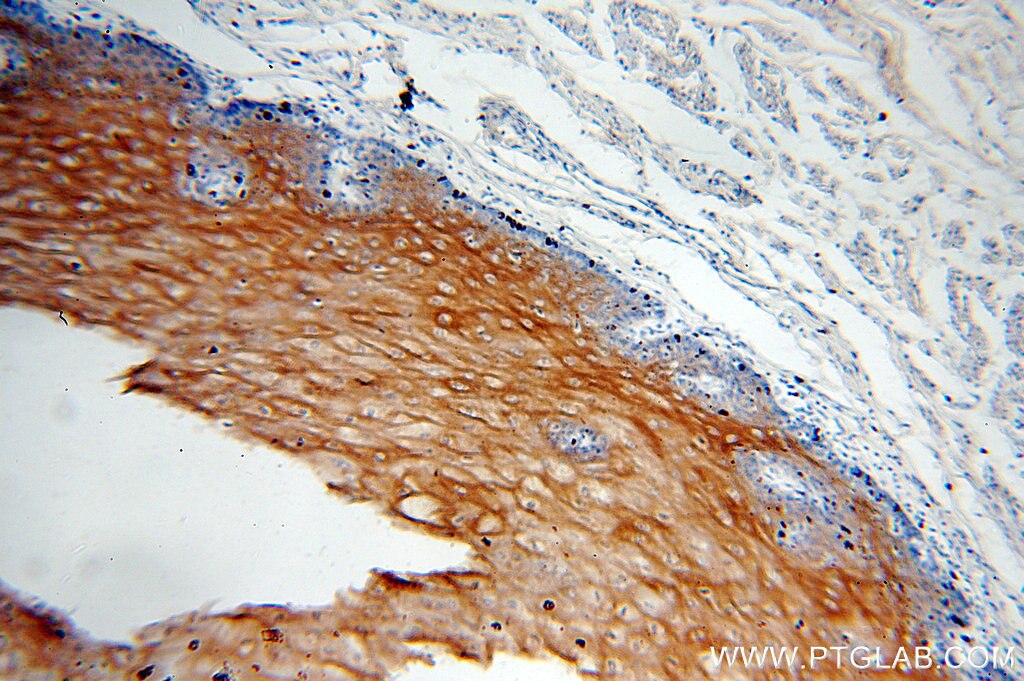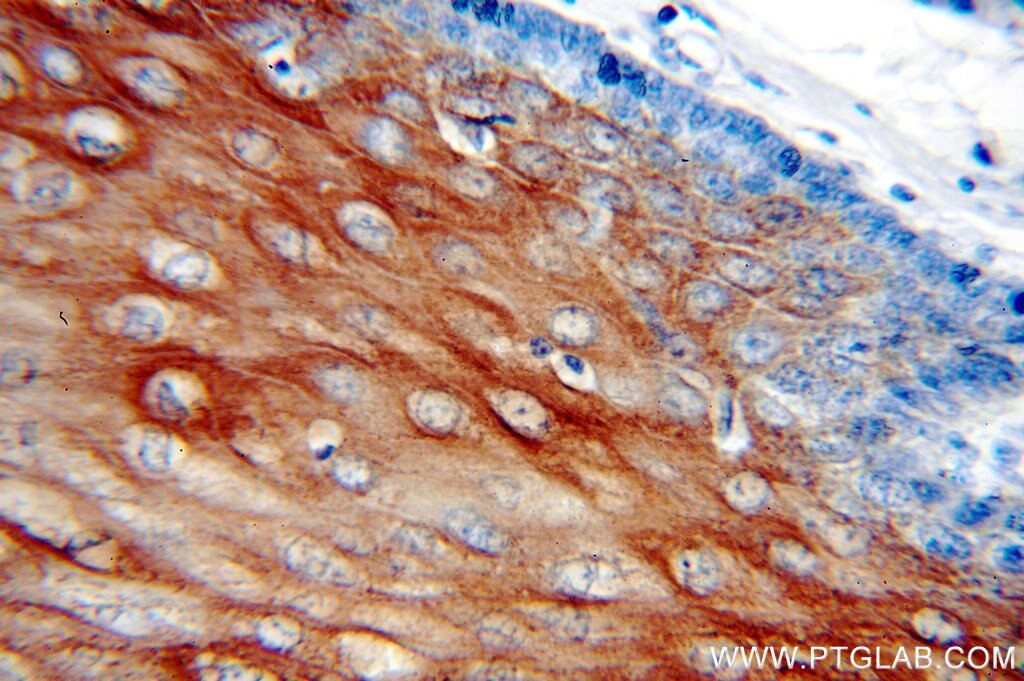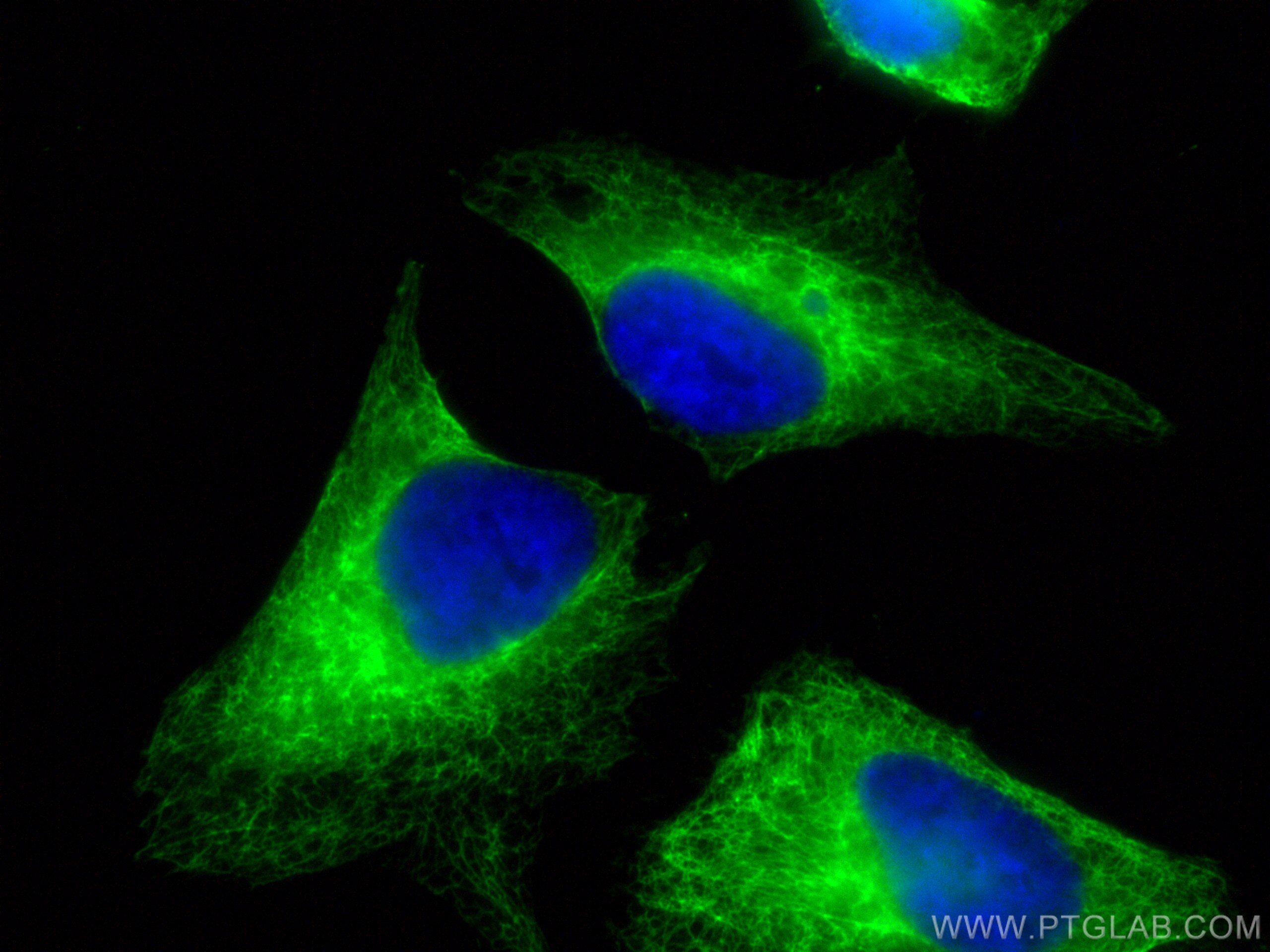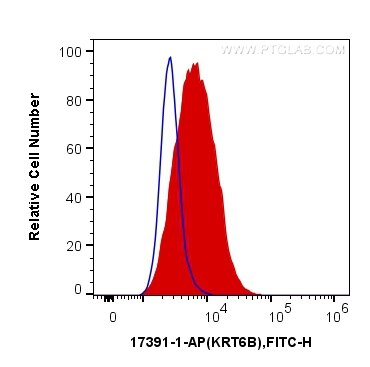- Phare
- Validé par KD/KO
Anticorps Polyclonal de lapin anti-Cytokeratin 6B
Cytokeratin 6B Polyclonal Antibody for WB, IF, IHC, ELISA, FC (Intra)
Hôte / Isotype
Lapin / IgG
Réactivité testée
Humain, rat, souris
Applications
WB, IHC, IF/ICC, FC (Intra), ELISA
Conjugaison
Non conjugué
N° de cat : 17391-1-AP
Synonymes
Galerie de données de validation
Applications testées
| Résultats positifs en WB | tissu cutané de souris, cellules A431, tissu cutané de rat |
| Résultats positifs en IHC | tissu de cancer du poumon humain, tissu amygdalien humain, tissu de cancer du col de l'utérus humain, tissu de cancer du sein humain, tissu œsophagien humain il est suggéré de démasquer l'antigène avec un tampon de TE buffer pH 9.0; (*) À défaut, 'le démasquage de l'antigène peut être 'effectué avec un tampon citrate pH 6,0. |
| Résultats positifs en IF/ICC | cellules HeLa, |
| Résultats positifs en FC (Intra) | cellules HeLa |
| Résultats positifs en cytométrie | cellules HeLa |
Dilution recommandée
| Application | Dilution |
|---|---|
| Western Blot (WB) | WB : 1:1600-1:5000 |
| Immunohistochimie (IHC) | IHC : 1:50-1:500 |
| Immunofluorescence (IF)/ICC | IF/ICC : 1:200-1:800 |
| Flow Cytometry (FC) (INTRA) | FC (INTRA) : 0.20 ug per 10^6 cells in a 100 µl suspension |
| Flow Cytometry (FC) | FC : 0.20 ug per 10^6 cells in a 100 µl suspension |
| It is recommended that this reagent should be titrated in each testing system to obtain optimal results. | |
| Sample-dependent, check data in validation data gallery | |
Applications publiées
| KD/KO | See 1 publications below |
| WB | See 1 publications below |
| IHC | See 1 publications below |
Informations sur le produit
17391-1-AP cible Cytokeratin 6B dans les applications de WB, IHC, IF/ICC, FC (Intra), ELISA et montre une réactivité avec des échantillons Humain, rat, souris
| Réactivité | Humain, rat, souris |
| Réactivité citée | Humain, souris |
| Hôte / Isotype | Lapin / IgG |
| Clonalité | Polyclonal |
| Type | Anticorps |
| Immunogène | Cytokeratin 6B Protéine recombinante Ag11288 |
| Nom complet | keratin 6B |
| Masse moléculaire calculée | 564 aa, 60 kDa |
| Poids moléculaire observé | 60 kDa |
| Numéro d’acquisition GenBank | BC034535 |
| Symbole du gène | Cytokeratin 6B |
| Identification du gène (NCBI) | 3854 |
| Conjugaison | Non conjugué |
| Forme | Liquide |
| Méthode de purification | Purification par affinité contre l'antigène |
| Tampon de stockage | PBS avec azoture de sodium à 0,02 % et glycérol à 50 % pH 7,3 |
| Conditions de stockage | Stocker à -20°C. Stable pendant un an après l'expédition. L'aliquotage n'est pas nécessaire pour le stockage à -20oC Les 20ul contiennent 0,1% de BSA. |
Informations générales
Keratins are a large family of proteins that form the intermediate filament cytoskeleton of epithelial cells, which are classified into two major sequence types. Type I keratins are a group of acidic intermediate filament proteins, including K9-K23, and the hair keratins Ha1-Ha8. Type II keratins are the basic or neutral courterparts to the acidic type I keratins, including K1-K8, and the hair keratins, Hb1-Hb6. Keratin 6 is a type II keratin. It is used as a marker for epidermal hyperproliferation and differentiation. Three keratin 6 isoforms were found, ketatin 6A,6B, and 6C. They share more than 99% identical DNA sequence.
Protocole
| Product Specific Protocols | |
|---|---|
| WB protocol for Cytokeratin 6B antibody 17391-1-AP | Download protocol |
| IHC protocol for Cytokeratin 6B antibody 17391-1-AP | Download protocol |
| IF protocol for Cytokeratin 6B antibody 17391-1-AP | Download protocol |
| FC protocol for Cytokeratin 6B antibody 17391-1-AP | Download protocol |
| Standard Protocols | |
|---|---|
| Click here to view our Standard Protocols |
Publications
| Species | Application | Title |
|---|---|---|
J Invest Dermatol Frizzled6 deficiency disrupts the differentiation process of nail development. | ||
J Transl Med Bladder cancer-derived exosomal KRT6B promotes invasion and metastasis by inducing EMT and regulating the immune microenvironment.
|
